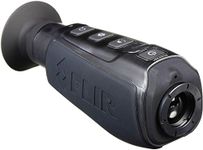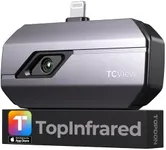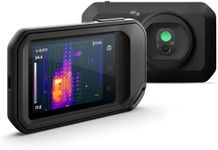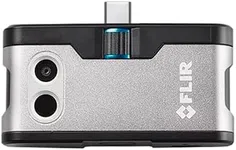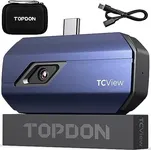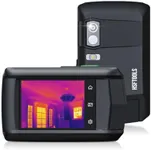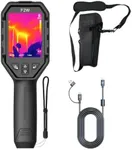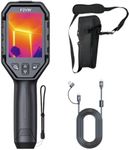Buying Guide for the Best Thermal Imagers
Choosing the right thermal imager involves understanding your specific needs and how different features and specifications can meet those needs. Thermal imagers are used in various fields such as building inspections, electrical inspections, mechanical inspections, and even in medical and veterinary applications. The key is to match the imager's capabilities with the requirements of your particular application. Here are some key specifications to consider and how to navigate them to find the best fit for you.ResolutionResolution refers to the number of pixels in the thermal image. Higher resolution provides more detail and clarity, which is crucial for identifying small temperature differences and spotting issues in complex environments. Resolutions can range from low (80x60 pixels) to high (640x480 pixels or more). For general building inspections, a mid-range resolution (around 320x240 pixels) is often sufficient. For more detailed work, such as electrical inspections or research, a higher resolution is recommended.
Thermal Sensitivity (NETD)Thermal sensitivity, or Noise Equivalent Temperature Difference (NETD), measures the smallest temperature difference the imager can detect. It is expressed in millikelvins (mK). Lower NETD values indicate higher sensitivity, which is important for detecting subtle temperature variations. For most applications, a NETD of 100 mK or lower is adequate. For more precise tasks, such as medical diagnostics or detailed research, look for a NETD of 50 mK or lower.
Temperature RangeThe temperature range indicates the minimum and maximum temperatures the imager can measure. This is crucial depending on the environment and the objects you are inspecting. For example, building inspections typically require a range from -20°C to 150°C, while industrial applications might need a range up to 600°C or more. Choose a thermal imager with a temperature range that covers the extremes you expect to encounter in your work.
Field of View (FOV)Field of View (FOV) describes the extent of the observable area the imager can capture at once. A wider FOV is useful for scanning large areas quickly, while a narrower FOV is better for focusing on specific details. For general inspections, a FOV around 45° is typically sufficient. For detailed inspections or when working in confined spaces, a narrower FOV (around 25°) might be more appropriate.
Image FusionImage fusion combines thermal images with visible light images to provide more context and detail. This feature can help you better understand the thermal data by overlaying it on a standard image. This is particularly useful in complex environments where identifying the exact location of a thermal anomaly is critical. If you need to present findings to clients or need precise location data, look for imagers with good image fusion capabilities.
Battery LifeBattery life determines how long the thermal imager can operate on a single charge. This is important for extended inspections or when working in remote locations without easy access to power. Battery life can vary from a few hours to over 8 hours. Consider how long your typical inspection sessions last and choose an imager with a battery life that exceeds this duration to ensure uninterrupted work.
Durability and Build QualityDurability and build quality are important if you plan to use the thermal imager in harsh environments or in the field. Look for imagers with rugged designs, drop resistance, and water/dust resistance ratings (such as IP ratings). This ensures that the device can withstand the conditions you will be working in and have a longer lifespan.
Software and ConnectivitySoftware and connectivity features allow you to transfer, analyze, and share thermal images easily. Look for imagers that offer user-friendly software for detailed analysis and reporting. Connectivity options like Wi-Fi, Bluetooth, or USB can facilitate easy data transfer to other devices. This is particularly useful for professionals who need to generate reports or collaborate with others.
